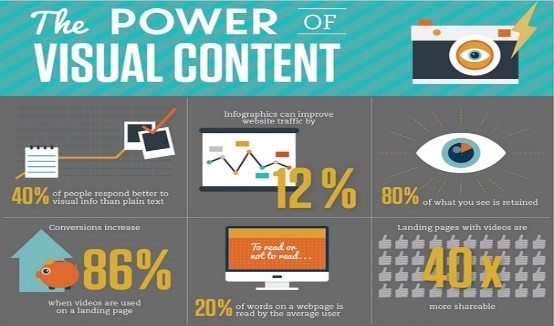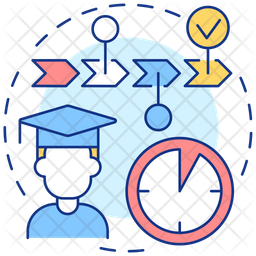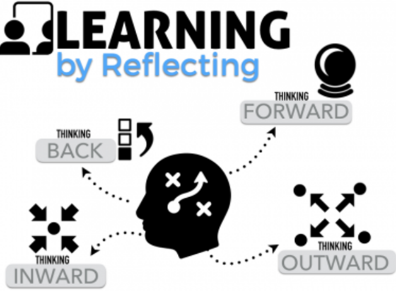
Background
Studies show that since the advent of the internet, our attention spans have dropped from 12 seconds to a mere 8 seconds in a span of 15 years. At the same time, the eLearning industry has grown upwards of 900% since the year 2000 and it shows no signs of slowing down.
The dilemma is how do you create content in this digital age from a source that is equal parts useful and non-distracting?
The answer lies in how that information is presented to its audience. Creating engaging eLearning content is possible by using some important strategies to design and organize your content. Read on to find out how!
So, the steps to achieve the answer are as follows:
- Understand Your Audience
Before diving into the content, take a step back and ask yourself: who is the target audience? Knowing who your learners are plays a great role in how you shape and present your content. Is it a younger, tech-savvy generation that knows its way around technology? Are they busy professionals who can’t commit to long periods of training? What skills do they already possess, and will they be able to handle the difficulty level of your content?
Organize the Content Thoughtfully

Organizing your course materials to make a logical and natural flow of information is crucial to holding the learners’ interest. It is important that successive modules build on each other and don’t cover too much content all at once. Spacing out concepts in digestible pieces prevents learners from getting overwhelmed.
It is also important to give good structure to your online courses so that the audience can associate concepts learned with each module, thereby enhancing retention. You should also give some thought to what aspects of the course are optional or which learning paths students should take if they want to pursue a specific track within the curriculum.
This idea of specific tracks, sometimes called ‘Learning Paths’, encourages users to take the content that they’re the most interested in. More interest from the user can also contribute to better retention.
Create Compelling Visual Experiences

To leave an impact on the learners, it is important to present content in a visually appealing manner.
- Using an attractive visual design, with rich graphics, colors, and animations is one way.
- Adding small chunks of text with relevant imagery can help learners recall information with much greater success.
- Delivering information in the form of videos is a much better way as it makes it easily digestible. While doing so, it is important to keep the videos short and to the point
- For more complicated concepts, breaking down the information into several small videos can be very helpful.
- Build training to work across more devices and for users to watch and revisit content that they’re most interested in.
Give Learners the Reins

As a learner, did you ever imagine that you opportunity to create your own learning paths during the eLearning process? The Key power to peruse content at your own leisure is a surefire way to spark curiosity.
Taking an active part in their own learning journey is a great way to keep your learners invested in their courses.
- By navigating to different modules,
- Exploring all the resources,
- Experimenting with different assignment types,
During this process, learners are encouraged to engage with the course content in a much more meaningful way.
Brevity is Key
Students today normally do not have the time nor the motivation to learn huge chunks of information. It is important to keep the lessons short and to the point, and not to overload your learners with presentations and notes with too much information.
Lengthy lesson plans and intimidating assignments are perhaps the quickest way to lose your learner’s interest.

This also ties into the concept of microlearning.
By focusing on one learning objective at a time, learners are likely to dedicate greater attention to the information presented and would be more inclined to
retain it. It’s also helpful to make engaging eLearning content in workplaces, where trainees have very limited time for learning and development.
Incorporate Interactive Elements

A hands-on learning experience that requires active participation from the audience is perhaps the most effective way to ensure engagement. This can be done in several ways.
- Converting a lecture from a passive, one-way interaction to an interactive virtual classroom,
- Incorporating drag-and-drop functionality in quizzes, open-response assessments,
- Discussion prompts, the list is endless.
- Gamification. Incorporating game-like elements like leaderboards, levels, badges, or points,
- Attaching a challenge to each learning objective and turn it into a fun and competitive exercise.
What matters is keeping the learners mentally occupied and attentive.
Add Self-Learning Option

You can add a self-learning option by providing content that can be studied by the learner without any support. This is by providing written content that students have to study themselves. After completing the content they can do self-testing to check their learnings
Additionally, you can also provide supporting content which is in addition to the content given and becomes available on demand. Then you can add lots of short tests, Ask the trainer where they can leave their questions and comments, you can also add on-demand live class/one-to-one interaction as well.
Make the Learners Reflect

#Reflective pedagogy has great potential to ensure that learners retain content by creating a meaningful learning experience. If the audience is able to make an emotional connection to the content, they are much more likely to connect with the information and grasp new concepts.
This can be done by including.
- Reflective prompts in your eLearning content.
- Asking the audience to think about and share experiences.
- Other means injecting humor, compelling stories, and motivation in your lectures to leave a lasting impression on the audience.
Keep Up the Good Work
Creating engaging eLearning content does not end with the course itself. After creating your course, it is imperative that you observe.
- How well it is received by the audience.
- Direct feedback from students
- Work towards gauging areas for improvement and potential missteps.
- Additional data, such as enrollment numbers, attendance, grades, and course progress are also key indicators of how well your content resonates with the learners.
At the end of the day, improvement is a continuous process and the wheel never stops turning. Making engaging eLearning content can be a tricky task that sometimes feels like a shot in the dark. But it doesn’t have to be. All you have to do is keep some basic principles in mind when creating your next course, and the rest will follow!
Key
#Reflective pedagogy is a teaching model where educators continually reflect upon their lessons and curriculum to improve future iterations of their course. Instructors who use the reflective pedagogy model regularly gather data on student satisfaction, engagement, and belonging to help inform subsequent lessons.
